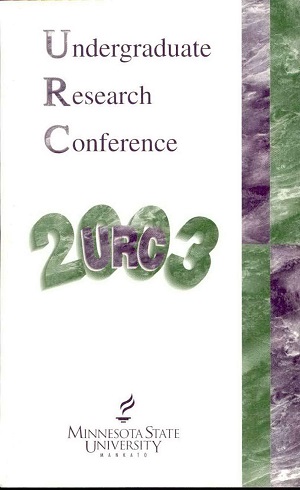The Effects of Exercise in WKY Pregnant Female Rats on Fetus Health
Location
CSU
Student's Major
Biological Sciences
Student's College
Science, Engineering and Technology
Mentor's Name
Penny Knoblich
Mentor's Department
Biological Sciences
Mentor's College
Science, Engineering and Technology
Description
The effects of exercise during pregnancy on the fetus are relatively unknown, but there is research supporting that pregnancy elevates physical stress in women. However, women are not prevented from continuing to exercise during pregnancy. In this study, fetal effects of voluntary exercise in pregnant rats were recorded. The rats were divided into three groups: a sedentary group, a pretrained group (a group that was exercised both before and during pregnancy), and an exercised group (a group that was exercised only during pregnancy). The rats were sacrificed on day 20 of a 21 day gestation. The fetal weights, placental weights, fetal kidney weights, litter size, number of reabsorption sites, and maternal weights were measured. The pretrained group of mothers (without fetal tissue) were heavier than the other two groups at day 20 of gestation, had the largest fetal size, and the largest kidney weight/g fetal body weight. The pretrained mothers had the most reabsorption sites followed by the exercise. The exercised mothers had the highest mean placenta weight, followed by the pretrained mothers. Conclusions are exercise caused some fetal stress, but appeared to increase fetal size at term. This increase in fetal size is not explained by a smaller number of fetuses, because final litter sizes were not significantly different between the groups.
The Effects of Exercise in WKY Pregnant Female Rats on Fetus Health
CSU
The effects of exercise during pregnancy on the fetus are relatively unknown, but there is research supporting that pregnancy elevates physical stress in women. However, women are not prevented from continuing to exercise during pregnancy. In this study, fetal effects of voluntary exercise in pregnant rats were recorded. The rats were divided into three groups: a sedentary group, a pretrained group (a group that was exercised both before and during pregnancy), and an exercised group (a group that was exercised only during pregnancy). The rats were sacrificed on day 20 of a 21 day gestation. The fetal weights, placental weights, fetal kidney weights, litter size, number of reabsorption sites, and maternal weights were measured. The pretrained group of mothers (without fetal tissue) were heavier than the other two groups at day 20 of gestation, had the largest fetal size, and the largest kidney weight/g fetal body weight. The pretrained mothers had the most reabsorption sites followed by the exercise. The exercised mothers had the highest mean placenta weight, followed by the pretrained mothers. Conclusions are exercise caused some fetal stress, but appeared to increase fetal size at term. This increase in fetal size is not explained by a smaller number of fetuses, because final litter sizes were not significantly different between the groups.




